
Color plays a crucial role when considering the grading of a single pearl. The color includes both the overtone and the body color of the pearl. The color can develop in many ways, and pearls come in a wide variety of colors, ranging from white to black. The pearl is an organic gemstone, formed within a living creature, which creates ample opportunities for different colors to emerge.
Natural Body Color
Pearls have a natural color, and this main color is called the pearl’s body color. Depending on the natural surroundings of the pearl, the body color can be white, silver, cream-colored, gold, green, blue or black. The natural colors of pearls are the result of a combination of factors, including the type of oyster that produced the pearl, the water conditions and, at times, the type of nucleus implanted into the pearl to stimulate its creation.
Overtone Colors and Pearl Orient
The overtones of the pearl are the translucent colors, which can sometimes appear on the pearl’s main body color. This can also look like a smoky layer of color. Despite being translucent, these overtones can alter the body color of the pearl, as a white pearl can look light pink if the overtone is rose. While some pearls have strong overtones, other pearls have none. The term “orient” refers to shimmering colors, which can look like glitter. A pearl’s orient is determined by the light reflected in the various thin layers of nacre that make up the pearl.
Artificial Colors
Not all pearls are naturally colored. Many pearls are artificially colored by a dying treatment process called artificial infusion or are subject to irradiation for color change. Identifying whether a pearl has been artificially treated is easy, as one merely needs to peek down the drilling hole to look for the concentration of color within the pearl. If the pearl has been artificially treated, there will dye present, or a darkened pearl nucleus if the pearl has gone through radiation treatment.
Cultured Pearls
Some types of pearls come from specific places, and are often in demand because of their uniqueness. Akoya pearls, for example, are white pearls that are comparable to the classic pearl. Akoya pearls often come in overtones of rose, cream and ivory. Another example is the freshwater pearl, which comes in various pastel shades, including white, black, pink, peach, lavender, plum, tangerine and purple. Tahitian pearls are often known for their darker shades of black and gray. The body color is often black, while the overtones will vary, causing the pearl to become either gray or dark green.
Faux Pearls
Faux pearls, or fake pearls, are created in many different colors. This is done either by coating the insides of the hollow beads and filling them with wax or by coating the outside with color, where the pearl is filled with pearl powder, the filler for faux pearls. Faux pearls are then dipped into various solutions of pearl film, which can increase their value. After dipping, a final polish is completed to give the faux pearl a shiny coat.
Related Articles
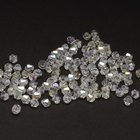
What Is Crystal AB?
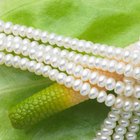
How to Identify a Majorica Pearl
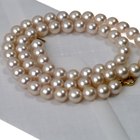
What Is the Range of the Cost of Pearls?

What Is Ceylon Sapphire?
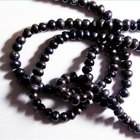
How Rare Is a Black Pearl?
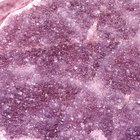
What Is a Pink Amethyst?
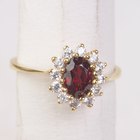
Physical Characteristics of the Ruby ...
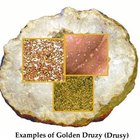
What Is Golden Druzy?
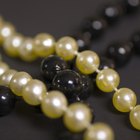
How to Tell What Pearls Are Worth
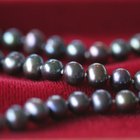
What is the Value of Black Pearls?

History of Pink Pearls

How Does Ultraviolet Light Affect ...

How to Lighten Birthmarks

Can a White Gold Ring Be Made into ...

How to Determine the Value of Pearls
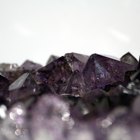
Types of Valuable Crystals

In What Parts of the World Are Valuable ...
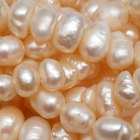
How to Identify Types of Pearls

Types of Coral Jewelry

Colors of Mink Coats
References
Writer Bio
Based in Toronto, Mary Jane has been writing for online magazines and databases since 2002. Her articles have appeared on the Simon & Schuster website and she received an editor's choice award in 2009. She holds a Master of Arts in psychology of language use from the University of Copenhagen in Denmark.
Photo Credits
Pearl in shell image by Dr.Szirmai János from Fotolia.com